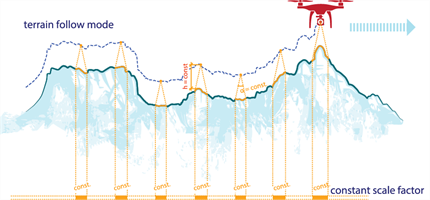The Antarctic Continent is a very important region for observing climate change and its evolution over time. The studies investigate the climate change prove that with the melting of the glaciers and the rise of the water, which is formed by the disruption of the radiation balance of atmosphere, more than 1 billion people will be affected by this situation in the near future. Therefore, long-term monitoring of glaciers is very important for the analysis of climate change impacts. For this purpose, the melting of glaciers and the topographic structure will be observed by comprehensive data collection methods including UAV 3D laser scanning, UAV Photogrammetry and UHA GPR technologies within the scope of the international project (Project No: 121N033) supported within the scope of bilateral cooperation between TUBITAK and BAS (Bulgarian Academy of Sciences).
The Antarctic Continent is a very important region for observing climate change and its evolution over time. The studies investigate the climate change prove that with the melting of the glaciers and the rise of the water, which is formed by the disruption of the radiation balance of atmosphere, more than 1 billion people will be affected by this situation in the near future. Therefore, long-term monitoring of glaciers is very important for the analysis of climate change impacts. For this purpose, the melting of glaciers and the topographic structure will be observed by comprehensive data collection methods including UAV 3D laser scanning, UAV Photogrammetry and UHA GPR technologies within the scope of the international project (Project No: 121N033) supported within the scope of bilateral cooperation between TUBITAK and BAS (Bulgarian Academy of Sciences).
You can find the detailed explanation about the project, coordinated by Assist. Prof. Dr. Mahmut Oğuz Selbesoğlu, below.

Project Title: Glacier Monitoring and 3D Modelling in Horseshoe Island Antarctica Based on UAV-GPR Observations
Project Number: TUBİTAK-121N033
Project Coordinator: Assist. Prof. Dr. Mahmut Oğuz Selbesoğlu
Abstract:
The Antarctic Continent is a very important region for observing climate change and its evolution over time. The studies investigate the climate change prove that with the melting of the glaciers and the rise of the water, which is formed by the disruption of the radiation balance of atmosphere, more than 1 billion people will be affected by this situation in the near future. Therefore, long-term monitoring of glaciers is very important for the analysis of climate change impacts. For this purpose, the melting of glaciers and the topographic structure will be observed by comprehensive data collection methods including UAV 3D laser scanning, UAV Photogrammetry and UHA GPR technologies within the scope of the international project (Project No: 121N033) supported within the scope of bilateral cooperation between TUBITAK and BAS (Bulgarian Academy of Sciences). Within the scope of the bilateral cooperation with BAS, the 3D models obtained will be evaluated in terms of geology, and the features of the region's glacial dynamics and topography will be revealed. The acquirement of new geological data to be obtained for Horseshoe Island will be a significant input to the geological knowledge of the area. Additionally, the results of this project will be compared with the available data in the area of the Bulgarian Antarctic Base on the Livingstone Island. Documenting the geological evolution of this part of Antarctica in space and time will also provide insights into the environmental and paleoclimatic evolution of Antarctic continent.